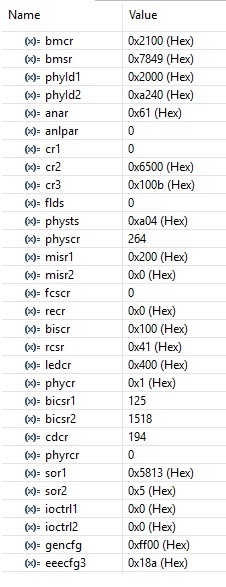Hi All,
We are using the DP83822HF for 100BASE-FX application. The optical fiber module inputs and outputs need AC coupled.
My question is what the 100Mbps ports' signaling are, open drain, LVPECL, LVDS?
How do we terminate them? Is there any working circuit that helps? On chip's EVM board design, it shows that they are terminated by 49.9 ohm resistors pulled up to +3.3V. But it does not work on my board in this way, PIN28/RX_ER shows logical High in most time and link is down.
Also, for 100Mbps rate, is there any one knowing the best SPF optical fiber transceiver to be used?
Thanks
Yaoting


